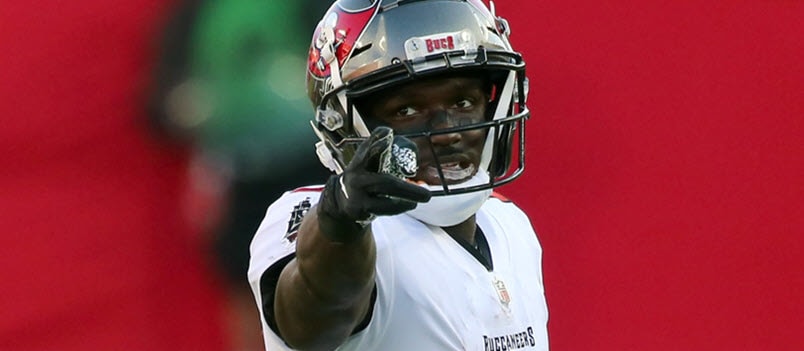According to league data from the last seven NFL seasons, there has been an average of almost 57 ACL tears per year. The 2021 season surpassed those averages with 71 ACL tears. But as this space examined last year, some positions, like quarterbacks, are less susceptible to long-term effects of an ACL tear, such that players can return to play more quickly and without much decline in performance, if any. Joe Burrow, for example, rebounded from his 2020 ACL tear to lead the Bengals to the Super Bowl last season.
For wide receivers, though, the outlook is less promising. First, the position is a magnet for ACL injuries. A 2022 study in the Orthopedic Journal of Sports Medicine (OJSM), discovered that wide receivers had the highest occurrence rate of ACL tears among offensive positions (linebacker was the highest overall).
That was certainly the case last season as no fantasy position was harder hit by ACL tears, with high-profile players Chris Godwin, Michael Gallup, Odell Beckham and Robert Woods succumbing to the injury.
Recovery following an ACL reconstruction is also an issue for wide receivers. According to a study in Arthroscopy, Sports Medicine and Rehabilitation (ASMAR), nine of 29 wide receivers studied (31 percent) did not return to play in the regular season the year following their ACL injury. Of those who did, the average return took 10.9 months. While that return-to-play time is not necessarily an outlier compared to other positions, wide receivers had a noticeable decline
According to league data from the last seven NFL seasons, there has been an average of almost 57 ACL tears per year. The 2021 season surpassed those averages with 71 ACL tears. But as this space examined last year, some positions, like quarterbacks, are less susceptible to long-term effects of an ACL tear, such that players can return to play more quickly and without much decline in performance, if any. Joe Burrow, for example, rebounded from his 2020 ACL tear to lead the Bengals to the Super Bowl last season.
For wide receivers, though, the outlook is less promising. First, the position is a magnet for ACL injuries. A 2022 study in the Orthopedic Journal of Sports Medicine (OJSM), discovered that wide receivers had the highest occurrence rate of ACL tears among offensive positions (linebacker was the highest overall).
That was certainly the case last season as no fantasy position was harder hit by ACL tears, with high-profile players Chris Godwin, Michael Gallup, Odell Beckham and Robert Woods succumbing to the injury.
Recovery following an ACL reconstruction is also an issue for wide receivers. According to a study in Arthroscopy, Sports Medicine and Rehabilitation (ASMAR), nine of 29 wide receivers studied (31 percent) did not return to play in the regular season the year following their ACL injury. Of those who did, the average return took 10.9 months. While that return-to-play time is not necessarily an outlier compared to other positions, wide receivers had a noticeable decline in performance following the injury, according to multiple studies.
The ASMAR study found wide receivers who returned to play had fewer targets, receptions, receiving yards and receiving touchdowns compared to their career averages, while The American Journal of Sports Medicine reported a one-third decrease in performance for wide receivers returning from ACL injuries. A study evaluating wide receivers published in the OJSM in 2021 observed this performance decline as well. The decline coincides with decreased snaps and overall physical limitations post-ACL surgery.
Furthermore, an initial ACL injury increases the likelihood of subsequent ACL injuries. Using data collected at the 2016 NFL Combine, a 2019 study published in the OJSM found that 25 percent of players who tore an ACL pre-NFL suffered another ACL tear after entering the NFL, a noticeable difference compared to the nine-percent rate of first-time ACL injuries for NFL players. KJ Hamler tore his ACL last season after first tearing it in high school. Beckham's ACL tear in last year's Super Bowl is another example of a player succumbing to multiple ACL injuries as it came less than 16 months after his first tear.
The nature of the position is one of the primary factors behind the high intrinsic risk of injury, decline and re-injury for wide receivers. Wideouts must make explosive moves off the line and hard, sharp cuts while running routes. These movements, including pivoting on a planted foot and sudden starts and stops, "place extreme demands," as one of the aforementioned studies put it, on the ligaments that stabilize the knee. The ACL is particularly at risk because of the significant torque and force placed across the knee by a wide receiver's movements.
In contrast, quarterbacks, for example, do not have to routinely make the same types of movements and have a lower chance of sustaining an ACL tear. And quarterbacks usually return to their previous level of play following an ACL tear. NFL signal-callers like Burrow, Deshaun Watson and Ryan Tannehill put up career numbers post-ACL reconstruction.
That probably won't be the case for this year's crop of wide receivers returning from ACL injuries. Receivers who suffered the injury late last season, like Godwin, Gallup and Beckham, might not be ready for Week 1. Some could even start the season on the PUP list, which means they'd miss the first six weeks. Others, like Hamler and Woods, who were injured earlier in the year, have a better chance of participating in training camp and being ready for the season opener. Whenever they return, though, these wideouts might not play up to their usual standards.
While the story for wide receivers with ACL tears isn't encouraging, they're not a death sentence for the position. Keenan Allen and Cooper Kupp put up their best seasons (at the time) their first year back from ACL surgery, and a 31-year-old Jordy Nelson led the league in receiving touchdowns in 2016 after missing all of 2015. It's up to fantasy managers to weigh the player's degree of risk against his draft-day cost.
Of course, ACL tears weren't the only injuries that affected players last season. Below we detail some important injury concerns entering 2022. Players are listed within each tier by risk level, highest to lowest. A word of caution: take everything players and teams say with a degree of skepticism. Instead, as drafts approach, watch a player's level of participation in offseason workouts, training camp and preseason. Monitoring a team's transactions can also offer a window into how confident it is in an injured player.
This article appears in the 2022 RotoWire Fantasy Football magazine. Order the magazine now.




































